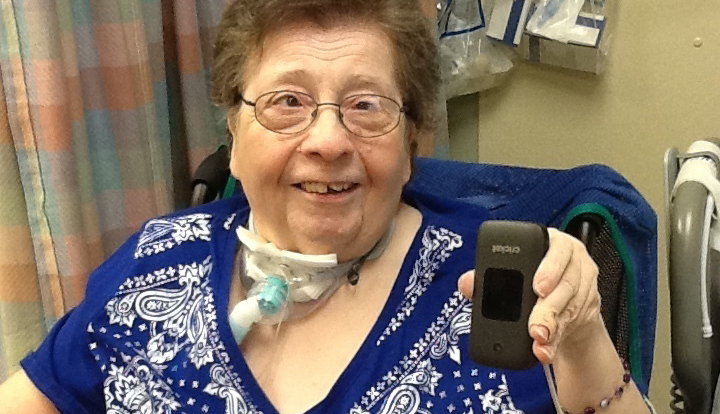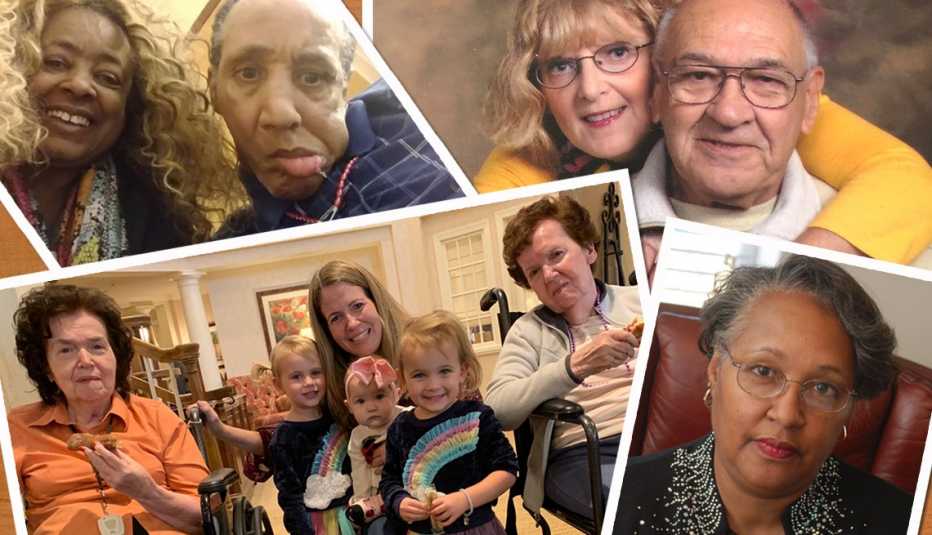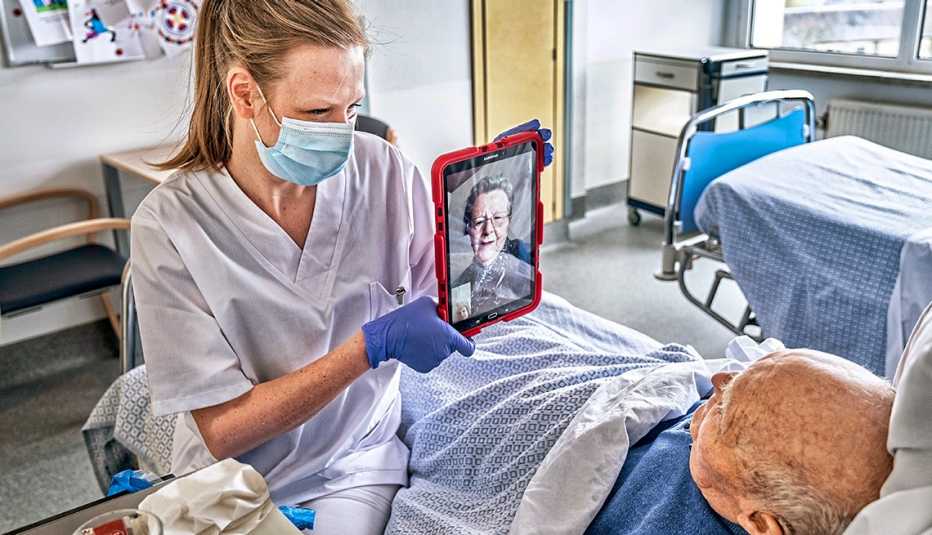Staying Fit
After a three-month ban on visitors at her nursing home in Mechanicsburg, Pennsylvania, 74-year-old Ronnie Ehrhart is eager to get in touch with friends on the outside.
But the 56-bed Fox Subacute nursing home has a limited number of phones to go around. “It's so hard to get those portal phones from the nurses, because they need it. And somebody else might have it, or they have to charge it,” Ehrhart says. “You can't always get it when you want it. So I don't ask for it that often."


AARP Membership— $12 for your first year when you sign up for Automatic Renewal
Get instant access to members-only products and hundreds of discounts, a free second membership, and a subscription to AARP the Magazine.
She uses the phone only once every 10 days or so. Ehrhart doesn't have much family, but she is close friends with a former pastor who lives in Montana. Ehrhart hasn't been able to speak with him in well over two weeks.
But she should soon find it easier to stay in touch with him and with members of her church in nearby York County, who would visit her during normal times. Her facility is one of nearly 50 nursing homes across the state set to receive new smartphones, thanks to funding for virtual visits from a government-nonprofit partnership.
The Pennsylvania Department of Aging, AARP Pennsylvania and the Pennsylvania Association of Area Agencies on Aging have bought six tablets and more than 100 phones for 49 nursing homes across the state. Bill Johnston-Walsh, director of AARP's Pennsylvania office, hopes the devices will be a game changer for residents, their friends and family members.
"We were hearing early on — and it was pretty sad — people would call us and say they had no idea what was happening with their parents,” Johnston-Walsh says. “We're hoping this alleviates some of that frustration and allows families to talk to their loved ones."
The federal Centers for Medicare & Medicaid Services effectively banned nursing home visits three months ago, at the start of the pandemic, except for end-of-life situations. AARP and other advocates for nursing home residents have been pushing for federal and state rules requiring facilities to offer virtual visits with loved ones, which they say can mean the difference between life and death for some residents.
But with limited budgets in long-term care facilities, phones and tablets are often in short supply. “I've heard of some facilities that have just one phone they pass around to residents,” says Robert Torres, Pennsylvania's secretary of aging. “We're hoping that this jump-starts additional support."
As the pandemic continues, advocates across the country are finding ways to keep nursing home residents better connected with the outside world. The federal government announced guidance in late May for reopening the facilities to visitors, but it urged extreme caution in doing so. The process could take months, making virtual visits the only option for most residents for the foreseeable future.




































































